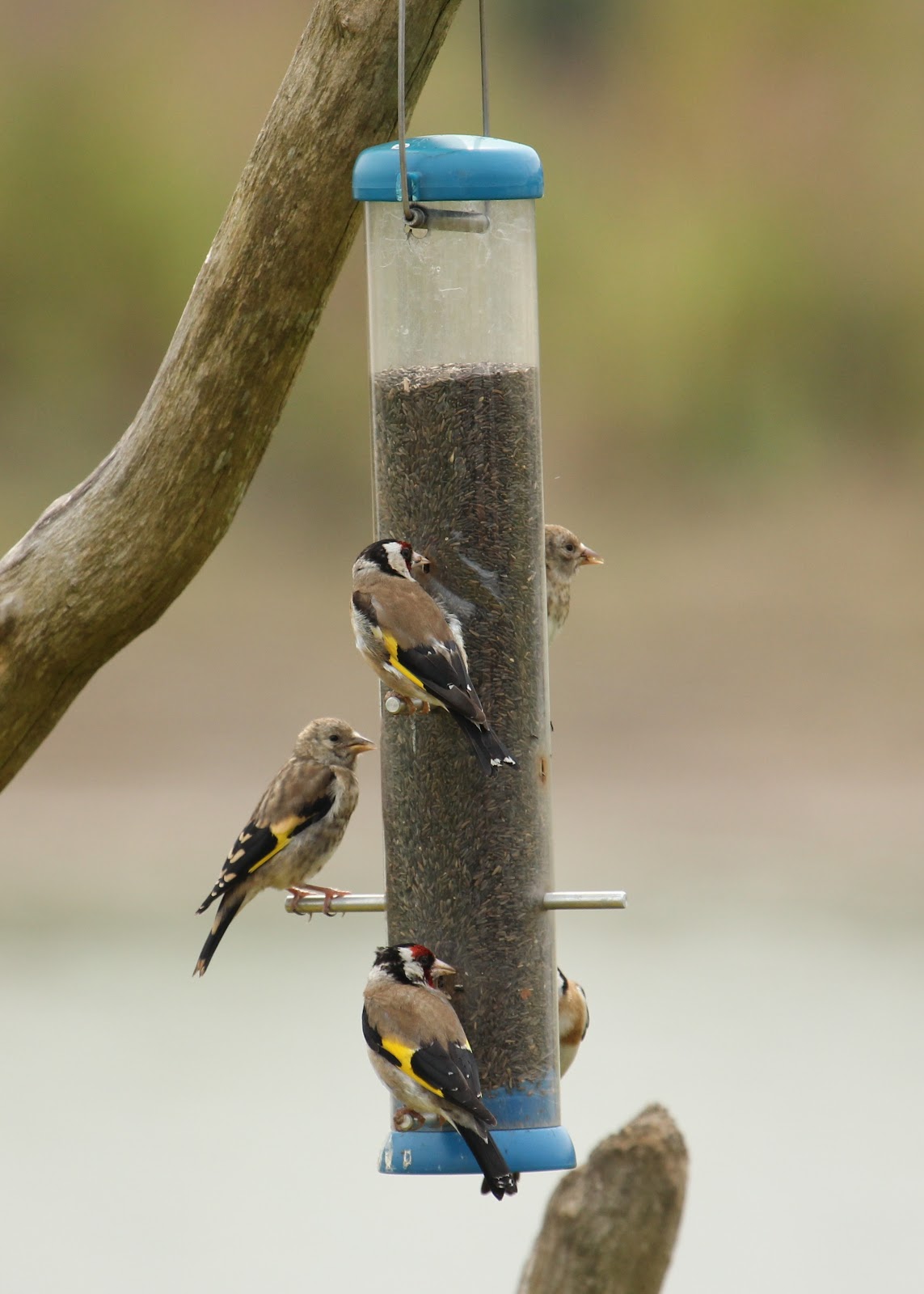Great White Pelican - Pelecanus onocrotalus
I can remember taking this shot and thinking I have to make sense at some point of what is out there on the lake shore at Manyara. The birds were a fair way off and I was safely (?) behind a scaffold rail that had been put up to seperate man from hippo. I can see Black-Winged Stilt, Egyptian Goose and I believe these are Greater Flamingo (the bills are bubble gum pink and black rather than all very dark browny red).
I am posting this picture up to log the Great White Pelican - "A wonderful bird is the Pelican, whose beak can hold more than his belly can !". I couldn't resist that. These Pelicans are massive indeed and can be told by their banana yellow bill pouch. The male and females can be told apart by the facial skin around the eye - more purply in the male.
We have come across one species of pelican to date on the Daily Bird - the Spot-billed Pelican. There are just 8 species to "collect" so we can celebrate that we have chalked up 25 % of the world's species and we have 26 years and 3 months to go. They are also big and easy to see so I am pretty confident about a slam with the Pelicans. 1 species is listed as vulnerable so I will need to drill down on some more information to find out why. There are species in Australia, Peru and America all of which seem sensible places to go at some point. No doubt I will find some Peruvian high Andean Pelican which only nests on one lake next to a gold mine that is poisoning the water with mercury.Sadly its not that local - its the Spot-billed that is at risk and mostly due to persecution right across its range by the poor fisherman of Asia. Check out the Hindu attitude to Spot-billed that I discovered in India in the posting linked above.
Pelicans are friendly birds and have had an affinity with fishing men since time immemorial - the thrown fish thats not big enough for the pot. The fish that jumps out of the net on the lakeshore. On many occasions they do not compete eating fish that man does not use. The eight species really do have a worldwide range - they are adpated to both fresh and saltwater. They are also among the heaviest of all flying birds weighing up to 33 pounds (15 kg) with wingspans of up to 11 1/2 feet (3.5 m). Most pelicans including the Great White Pelican feed by herding fish from the the surface and then lunging - sometimes in cooperative groups. The fish are then swallowed quite quickly as the weight of water trapped in the pouch prevents the bird from taking off again.Only one species plunge dives and we will have the chance to catch up with that later in the year. They are long-lived in the wild (15 years) and birds in captivity have been know to make the grand old age of 50.
Pelicans need 10 % of their body weight in fish every day to survive - more when they have chicks to feed. One main Pelican product is guano, rich in phosphates and a valuable fertilser. Around the world breeding islands have been exploited for the huge piles of natural fertiliser for hundreds of years - mostly in South America.
So thats a smorgasbord of Pelican facts for a cold Tuesday morning in Dubai - can you believe its 13 or 14 degrees some mornings at the moment with a cool mist in off the sea ! Unlike the Pelican I have the choice of a gym rather than the pool - as they wake they will fly some large distances to their feeding grounds - a cold sea or lake with the requirment to haul out a kilogram of fish with "net". I am trudging over to a cross trainer to try and get some fitness for the wilds ! I have identified that its not much use trying to photograph the worlds birds if I cannot e.g. walk into the jungle to see them. I saw a superb documentary on Venezuela last night I had taped of Animal Planet. Looking foward to getting up the Orinoco at some point.
If you are regular have a great day - get that holiday booked - its cold and Januaryish we need something to look foward to ! I felt better as soon as I had got the Safari booked. I am owing on a Disney World trip but now I know there are Brown Pelicans waiting which I believe are the only plunge diving Pelicans I am doubly incentivised.
Great White Pelican, Pelicanus onocrotalus
Lake Manyara, Tanzania
July 2013
























